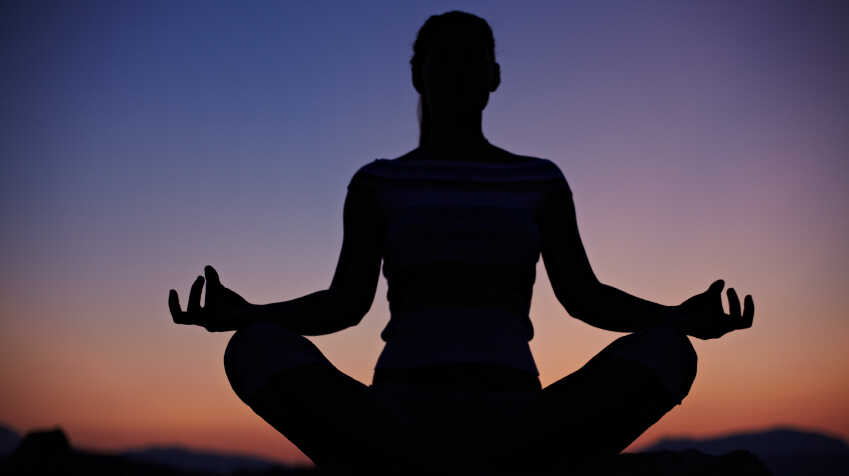How to Start Mindfulness Meditation

Are you feeling overwhelmed and in need of some inner peace? It’s time to start mindfulness meditation.
In this article, we’ll guide you through the steps to begin your mindfulness journey. Discover the numerous benefits of this practice and learn the basics of mindfulness.
Find out how to create a serene space, establish a regular meditation schedule, and master breathing techniques. Say goodbye to stress and hello to a more mindful you.
Let’s get started!
Key Takeaways
- Mindfulness meditation can improve mental health, reduce stress, and promote calm and relaxation.
- Beginners can start with techniques such as deep belly breathing, 4-7-8 breathing, and body scan meditation.
- Creating a suitable environment with a clear space, soft lighting, comfortable seating, and peaceful decor can enhance the meditation experience.
- Establishing a regular meditation practice through consistency, finding a specific time and place, and seeking accountability partners or joining a meditation group can help in reaping the benefits of mindfulness meditation.
The Benefits of Mindfulness Meditation
You’ll be amazed at the benefits you’ll experience from practicing mindfulness meditation. By incorporating this simple practice into your daily routine, you can significantly improve your mental health and reduce stress.
Mindfulness meditation helps you become more aware of your thoughts and emotions, allowing you to better manage stress and anxiety. It promotes a sense of calm and relaxation, giving you the tools to navigate through life’s challenges with ease.
Additionally, mindfulness meditation has been shown to enhance focus and concentration, leading to increased productivity and overall well-being. It can also improve sleep quality, boost self-esteem, and foster a greater sense of happiness and contentment.
Understanding the Basics of Mindfulness
If you’re looking to cultivate a greater sense of calm and clarity in your life, mindfulness may be just the practice for you.
Benefits of mindfulness include reduced stress, improved focus, and increased self-awareness.
As a beginner, there are several techniques you can try, such as focusing on your breath, practicing body scan meditation, or engaging in mindful walking.
Benefits of Mindfulness
When practicing mindfulness, you can experience a range of benefits such as reduced stress and improved focus. Here are three ways mindfulness can positively impact your daily life:
- Increased self-awareness: Mindfulness allows you to tune in to your thoughts, emotions, and physical sensations in the present moment. This heightened awareness helps you make conscious choices and respond rather than react impulsively.
- Improved stress management: Mindfulness offers effective tools to cope with daily stressors. By practicing mindfulness, you can cultivate a sense of calm and relaxation, reducing the negative impact of stress on your physical and mental well-being.
- Enhanced focus and concentration: Regular mindfulness practice can train your mind to stay present and focused. This heightened concentration allows you to be more productive, make fewer mistakes, and enjoy a greater sense of clarity and purpose in your daily tasks.
Incorporating mindfulness into your daily life can bring about positive changes, especially in stress reduction and overall well-being.
Techniques for Beginners
To begin practicing mindfulness, it’s helpful to start with simple techniques like deep breathing or body scans. These techniques can help you ground yourself in the present moment and cultivate a sense of calm and relaxation.
Here are a couple of breathing exercises you can try:
| Breathing Exercise | Steps |
|---|---|
| Deep Belly Breathing | 1. Find a comfortable position. 2. Place one hand on your belly and the other on your chest. 3. Take a slow, deep breath in through your nose, allowing your belly to rise. 4. Exhale slowly through your mouth, feeling your belly sink back down. Repeat for several minutes. |
| 4-7-8 Breathing | 1. Sit or lie down in a comfortable position. 2. Close your eyes and take a deep breath in through your nose for a count of 4. 3. Hold your breath for a count of 7. 4. Exhale slowly through your mouth for a count of 8. Repeat for several rounds. |
In addition to breathing exercises, you can also try a body scan to bring awareness to different areas of your body and release tension. Here’s how you can do it:
- Find a quiet and comfortable space to lie down or sit.
- Close your eyes and take a few deep breaths to relax.
- Start from the top of your head and slowly scan down your body, paying attention to any sensations or areas of tension.
- As you encounter tension, take a moment to breathe into that area and release any tightness or discomfort.
- Continue this process until you have scanned your entire body.
Finding a Quiet and Comfortable Space
Make sure you find a quiet and comfortable space for your mindfulness meditation practice. Creating a serene environment is essential to finding tranquility and deepening your meditation experience. Here are some tips to help you set up the perfect space:
- Clear the clutter: Remove any distractions or unnecessary items from your meditation area. A clutter-free space will help you focus and create a sense of calm.
- Soft lighting: Opt for soft, natural lighting or use candles to create a soothing ambiance. Harsh lighting can be distracting and disrupt your concentration.
- Comfortable seating: Choose a cushion or chair that allows you to sit comfortably with good posture. Make sure your body feels supported and relaxed.
- Peaceful decor: Surround yourself with objects that bring you peace and tranquility, such as plants, incense, or calming artwork.
Setting a Regular Meditation Schedule
When it comes to setting a regular meditation schedule, consistency and commitment are key. By dedicating yourself to a specific time each day, you create a routine that helps you stay on track with your mindfulness practice.
Not only does this consistency allow you to find inner peace, but it also helps you overcome time constraints by prioritizing meditation in your daily life.
Consistency and Commitment
Remember, staying consistent and committed to your mindfulness meditation practice is key for experiencing its full benefits. Consistency challenges can arise when life gets busy or when you feel unmotivated. However, maintaining commitment is essential to reap the rewards of mindfulness meditation.
Here are some strategies to help you stay consistent and committed:
- Set a specific time and place for your meditation practice to establish a routine.
- Start with shorter sessions and gradually increase the duration to avoid feeling overwhelmed.
- Find an accountability partner or join a meditation group to stay motivated and inspired.
By facing consistency challenges head-on and making a conscious effort to maintain commitment, you can overcome obstacles and make mindfulness meditation a regular part of your life.
Finding Inner Peace
To find inner peace, you must prioritize self-care and take time for yourself every day. It’s important to incorporate inner peace techniques into your daily routine to promote mindfulness and stress relief. Here are three effective techniques you can try:
| Technique | Description |
|---|---|
| Meditation | Set aside a few minutes each day to practice meditation. Find a quiet space, close your eyes, and focus on your breath. Let go of any thoughts or distractions and simply be present in the moment. |
| Journaling | Writing down your thoughts and emotions can be a powerful tool for finding inner peace. Take a few moments each day to reflect on your experiences and express your feelings on paper. This practice can help you gain clarity and release any pent-up emotions. |
| Gratitude | Cultivating a sense of gratitude can shift your focus from negativity to positivity. Each day, write down three things you are grateful for. This simple practice can help you find peace and contentment in the present moment. |
Overcoming Time Constraints
Overcoming time constraints can be challenging, but by prioritizing self-care and incorporating simple techniques like journaling and gratitude, you can still find inner peace in your daily life.
Here’s how you can manage distractions and make time for yourself:
- Set boundaries: Create designated time slots for self-care activities and stick to them. Let others know that during these times, you need space to focus on yourself.
- Eliminate unnecessary tasks: Identify tasks that don’t add value to your life and consider eliminating or delegating them. This will free up precious time for self-care.
- Practice mindfulness: Train your mind to stay present and focused on the task at hand. By managing distractions and avoiding multitasking, you can make the most of your time and create a sense of calm.
Breathing Techniques for Mindfulness Meditation
Take a moment to focus on your breath, allowing it to naturally flow in and out as you begin your mindfulness meditation practice. Focused breathing is a crucial aspect of mindfulness meditation.
As you settle into your practice, pay attention to the sensation of each inhale and exhale. Let your breath be your anchor, bringing you back to the present moment whenever your mind starts to wander.
Along with focused breathing, the importance of posture cannot be overlooked. Sit with your back straight, but not stiff, allowing your spine to naturally align. This helps create a sense of stability and groundedness, allowing your energy to flow freely.
Cultivating Mindful Awareness of Thoughts and Feelings
Pay attention to your thoughts and feelings, allowing them to arise and pass without judgment or attachment. Cultivating present moment awareness of your inner experiences can greatly enhance your mindfulness practice.
As you delve into the realm of your thoughts and emotions, remember to practice self-compassion. Here are some ways to cultivate mindful awareness of your thoughts and feelings:
- Notice the thoughts and emotions that arise in your mind and simply observe them without getting caught up in them.
- Practice non-identification by reminding yourself that you are not your thoughts or emotions; they are just passing phenomena.
- Embrace curiosity and open-mindedness, approaching your thoughts and feelings with a sense of wonder and exploration.
Dealing With Challenges and Maintaining Consistency
When faced with challenges, it’s important to stay consistent in your practice of cultivating mindful awareness of your thoughts and feelings.
Dealing with distractions can be difficult, but remember that distractions are a natural part of the meditation process. Instead of fighting against them, acknowledge their presence and gently bring your attention back to your breath or your chosen focus point.
By doing this, you can maintain your motivation and continue to deepen your practice. It’s easy to get discouraged when facing obstacles, but remember that consistency is key.
Even on days when you don’t feel motivated or when distractions seem overwhelming, making the effort to sit and practice mindfulness meditation can make a world of difference. Keep pushing through and you’ll reap the benefits of a consistent mindfulness practice.
Frequently Asked Questions
How Long Does It Take to See the Benefits of Mindfulness Meditation?
You’ll start experiencing the benefits of mindfulness meditation in a few weeks. It can help with anxiety relief and improve focus and productivity in the workplace. Stick with it and see the positive changes.
Can Mindfulness Meditation Help With Managing Chronic Pain?
Mindfulness meditation can help manage chronic pain. It promotes relaxation, reduces stress, and improves sleep quality. Incorporating this practice into your daily routine can provide relief and support overall well-being.
Is It Normal to Feel Restless or Distracted During Meditation?
Feeling restless or distracted during meditation is normal. The mind naturally wanders, but the practice is about gently bringing your attention back to the present moment. Be patient and kind to yourself.
How Can I Incorporate Mindfulness Into My Daily Life Outside of Meditation Sessions?
To incorporate mindfulness into your daily life outside of meditation sessions, try practicing mindfulness techniques like deep breathing or body scans throughout the day. Engage in mindfulness exercises such as mindful eating or walking.
Are There Any Specific Recommendations for Mindfulness Meditation Techniques for Beginners?
For beginners, specific techniques for mindfulness meditation include focusing on your breath, body scan, and loving-kindness meditation. These recommendations help you cultivate awareness and presence in your daily life.









